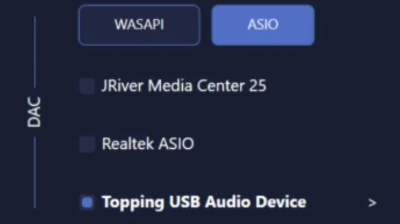love that you’re vibing with it! Let’s dig deeper into the real tech meat of modern audio: DAC architecture, ASIO vs WASAPI, and the black magic of analog gear modeling — but still with high-level insight and a dash of wit.
Deep Dive Part II: Behind the Sound Curtain
🧠 1. DAC Architecture: From Chip to Soul
Dave:
So… everyone keeps throwing “ESS Sabre” and “AKM” DACs around like wine snobs. What actually makes one DAC better than another?
Lia:
Right, let’s cut through the audiophile mysticism.
A DAC (Digital-to-Analog Converter) does one thing: turn digital audio (like your 24-bit/96kHz FLAC) into analog voltage your amp and speakers can use. But how it does that is what makes or breaks sound quality.
🎚️ Key DAC Features:
| Feature | What It Does | Why It Matters |
|---|---|---|
| Bit Depth | Determines dynamic range (e.g., 16-bit = 96dB, 24-bit = 144dB) | More detail, especially in quiet parts |
| Sample Rate | How often the signal is sampled (e.g., 44.1kHz vs. 192kHz) | Higher = more headroom for processing |
| SNR / THD+N | Signal-to-noise & distortion specs | Lower distortion = cleaner signal |
| Jitter Handling | Timing accuracy between digital samples | Poor jitter = harsh highs, smeared image |
| Oversampling / Filtering | Removes aliasing and noise shaping | Impacts transient detail and “feel” |
🔬 Popular DAC Chips:
- ESS Sabre (e.g., ES9038PRO): Ultra-low THD+N, hyper-detailed, fast transients. Pristine, but some say “clinical.”
- AKM (e.g., AK4499): Smooth, “musical” character, loved in hi-fi and mastering gear.
- Burr-Brown (TI PCM series): Classic “warm” sound, found in RME and others.
⚠️ Myth Buster: “Bit-perfect” DACs do not all sound the same. Analog output stage design, clocking, power supply, and filtering all affect the final sound.
🥷 2. ASIO vs WASAPI: The Battle of the Bypasses
Dave:
Let me guess… ASIO is like a VIP pass straight to the CPU’s audio core, and WASAPI is like waiting in line at the DMV?
Lia:
Almost perfect metaphor, actually. Let’s break it down.
🎧 ASIO (Audio Stream Input/Output)
- Developed by Steinberg.
- Bypasses Windows audio stack (no resampling, no mixing).
- Provides ultra-low latency, high stability.
- Needs dedicated drivers from the hardware vendor (e.g., Focusrite, RME, MOTU).
✅ Best for: Professional audio work, DAWs, real-time effects, virtual instruments.
🧼 WASAPI (Windows Audio Session API)
- Native to Windows Vista and above.
- Has two modes:
- Shared Mode: goes through Windows mixer (adds latency/resampling).
- Exclusive Mode: bypasses the mixer (like ASIO-lite).
- Latency is much improved over legacy WDM/DirectSound.
- Doesn’t always need special drivers.
✅ Best for: High-quality media playback, low-latency gaming or consumer use.
🔥 Bonus: Kernel Streaming
- Even deeper than WASAPI exclusive.
- Like talking to the audio driver with a whisper straight into its soul.
- Rarely used today — not user-friendly.
Lia:
So, use ASIO if your DAW supports it. WASAPI Exclusive is great if you’re using apps like Foobar2000 or Tidal and want bit-perfect playback without any Windows “enhancements.”
Dave:
Unless you like your music passed through Windows Sonic with a splash of digital reverb and half a decibel of random volume boost.
🔮 3. Analog Gear Modeling: Alchemy in Code
Dave:
Alright, explain this to me. How does a plugin in a DAW “sound” like a $4,000 compressor from 1972? Witchcraft?
Lia:
Not far off. Welcome to the world of digital analog modeling.
🛠️ There are two main types:
- Component-Level Modeling (Physical Modeling):
- Simulates the behavior of individual electronic components (resistors, capacitors, transformers).
- Extremely CPU-intensive, but insanely accurate.
- Used by: Universal Audio, Acustica Audio, Softube Console 1
- Behavioral/Black Box Modeling:
- Measures input/output curves of real gear and mimics the overall response.
- Less precise, but lighter on CPU.
- Used by: Waves, Plugin Alliance, many others.
🌈 Things They Model:
- Tube warmth (non-linear harmonic distortion)
- Transformer saturation
- Tape compression and wow/flutter
- EQ phase shifts from analog circuits
- Circuit noise and crosstalk
Dave:
So when I slap a “Fairchild 670” plugin on a vocal, it’s not exactly the same?
Lia:
It can be shockingly close — sometimes better, since you don’t get old capacitor hiss or heat-induced drift. But true analog still has a “chaotic magic” digital can’t fully mimic.
⚠️ Myth Buster: More analog ≠ always better. Many iconic albums were mixed entirely in the box. It’s all about how you use the tools.
🧬 TL;DR: Your Audiophile Friend Needs This
- Modern DACs are amazing — but the output stage matters as much as the chip.
- ASIO is still king for pro audio; WASAPI Exclusive is a strong contender for high-fidelity playback.
- Analog gear modeling has reached near-sorcery levels — but vintage tone is now a preset, not a rack full of overheating metal.
Lia:
So what’s the takeaway, Dave?
Dave:
Buy less snake oil, trust your ears, and remember: good converters won’t fix bad mixes.
Lia:
Amen. Now let’s go argue about loudness normalization on Spotify like civilized engineers.
